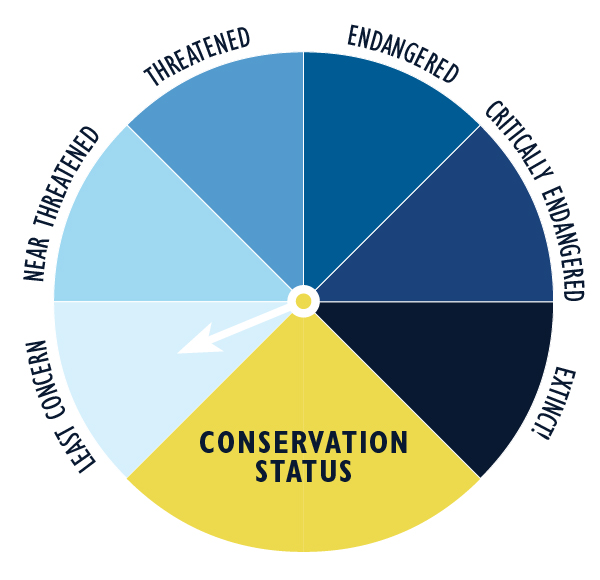
About Blue and Yellow Macaw
The blue and yellow macaw is one of the most eye-catching birds in the animal kingdom. With blue on their backs and wings, yellow feathers on their stomach, and green colored tips on the end of their wings, this macaw is very vibrant in the trees and in the sky. It is perhaps best known for its ability to mimic words and sounds, which reflects its intelligence and social awareness.
Habitat
The blue and yellow macaw primarily resides in rainforests and riparian zones, or areas between land and a river or stream. This bird is found throughout eastern Panama, in parts of Columbia, Ecuador, Venezuela, Brazil, Bolivia, Paraguay, Argentina, and northern Peru.
Diet
Its diet consists primarily of seeds, nuts, and fruits.
Family Life
This species is usually found in pairs, but may form flocks of up to 30 birds. Females lay one or two eggs and incubate them for 24 to 26 days while the male brings her food.
Conservation Status
The conservation status of the Blue and Yellow Macaw is classified as least concern.
Threats
- The blue and yellow macaw has several known natural predators that include harpy eagles, hawk eagles, and orange-breasted falcons. These predators will attack the blue and yellow macaw in flight.
- Humans are also a known predator to this species as they will hunt the macaw for food, feathers, and to trade as pets.
- Due to their large geographic range, the population as a whole is not under any immediate threat. Habitat degradation in South America, however, plays a role in the decline of the species due to pollution, development, and logging.
Facts about Blue and Yellow Macaw
Class:
Aves (birds)Order:
Psittaciformes (parrots)Family:
Psittacidae (parrots, cockatoos, and relatives)Genus:
Ara (macaws)Species:
Ara ararauna (blue and yellow macaw)Life Span:
30 – 35 years (wild) / Up to 50 years (zoo)Size:
32 – 36 inches (81 – 91 cm)Weight:
32 – 64 ounces (900 – 1815 g)Wing Span:
41 – 45 inches (104 – 115 cm)
Fun Facts
- The blue and yellow macaw uses its powerful beak to crush seeds and crack open nuts.
- Strange climbers! They use their beaks as a “third foot” when climbing.
- The blue and yellow macaw communicates through loud squawks and screams.